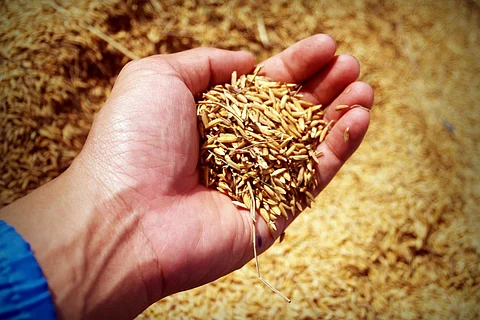Switch to new rice varieties seen to mitigate effects of El Niño in DavSur
THE Department of Agriculture is set on implementing an El Niño mitigation plan in Digos City and the towns of Kiblawan, Sulop, Padada, Hagonoy Matanao, Bansalan, and Magsaysay in the province of Davao del Sur.
Agriculture Officer II Judel Leliza of the Department of Agriculture XI said they have developed an action plan including a water delivery schedule, utilization of alternate wetting and drying technology, diversification of crops, and the use of early maturing and drought-resistant crop varieties to mitigate the effects of El Niño on the rice and corn plantations of the farmers.
He said that the plan of the DA XI aims not only to stabilize the rice supply but also to increase rice production, particularly in the provinces of Davao de Oro and Davao del Norte.
But in Davao del Sur, where there is a reduction in water sources, Leliza said that local farmers have been advised to use early-maturing varieties of rice, as recommended by the Philippines Rice Research Institute, to increase their yield.
The early maturing varieties include the PSB RC8 (Talavera), NSIC RC 394 (Tubigan 32), NSIC RC 396 (Tubigan 33), NSIC RC 402 (Tubigan 36), PSB RC 4 (Mulawin), PSB RC 10 (Pagsanjan), PSB RC 82 (Penaranda), NSIC RC 118 (Matatag 3), NSIC RC 120 (Matatag 6), and NSIC RC 130 (Water 3).
Leliza said these types of rice varieties can yield up to 7.1 tons of rice per hectare, adding that soil and water must be utilized properly in planting rice.
He said they will teach the rice farmers technologies on how to use the soil and water to increase the yield.
Engr. Alteid Abbot, who heads the operations and maintenance section of National Irrigation Administration (NIA) XI, stated that they have implemented several measures to address the water scarcity issue.
He said these measures include scheduling water delivery, using alternate wetting and drying technology, diversifying crops, and introducing early-maturing and drought-resistant crops.
Abbot said that to ensure that every farmer gets their fair share of water, NIA XI has initiated a rotational method of water flow in NIA canals.
He explained that the method involves a five-day schedule among irrigator associations to supply water to rice paddies in all areas.
"We are confident that with this rotational method, we will be able to provide water to everyone despite the depleting water sources," Abbot said.
Genaro Dumayas Jr., a 59-year-old re-elected Punong Barangay of New Ilocos in Magsaysay, Davao del Sur, and a father of five, expressed
"We are confident that with this rotational method, we will be able to provide water to everyone despite the depleting water sources," Abbot said. his happiness over the regular rain showers in Magsaysay, especially in the late afternoons and early evenings.
He said they still enjoy the availability of water through the irrigation system.
Dumayas said he has planted early-maturing varieties of palay for now, but he saves space for planting mongo, eggplant, okra, ampalaya, string beans, and luminous crops like sweet potatoes to compensate for the losses.
He expressed hope that the local government would release the calamity fund once the situation worsened.
Sixty-year-old Roman Abatayo, a rice farmer from Barangay Marber, Bansalan town, said that the water from the Bulatukan River still flows fast in several sections but no longer on the whole river.
He also noticed that the Marber River had depleted.
“I can see that there is already a reduction of water in some of our areas,” Abatayo said.
Rosemarie Salvador, a rice farmer from Barangay New Ilocos, Magsaysay, Davao del Sur, also reported that they are still experiencing heavy rains in their area despite the El Niño phenomenon.
To manage the situation, Salvador and her community have been encouraging water conservation through barangay pulung-pulong (meetings).
She suggested that people can save water by not watering plants around the house daily.
Salvador introduced a system of filling three large containers of rainwater in the backyard to provide access to water for animals and people to wallow in.
She said the El Niño phenomenon is already affecting Davao del Sur, characterized by intense heat as early as seven o’clock in the morning and scorching heat between noon and 3:00 in the afternoon.
Lolit Vinalay, a research specialist of the Department of Science and Technology-Philippine Atmospheric Geophysical and Astronomical Services Administration (DOST-PAGASA) based in Davao City, warned that the heat index in Davao Region continues to rise at 39 degrees Celsius.
“The El Niño phase is already here. The mountains of Davao del Sur have changed their color from green to brown due to the depletion of water resources,” she said. PIA DAVAO

